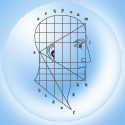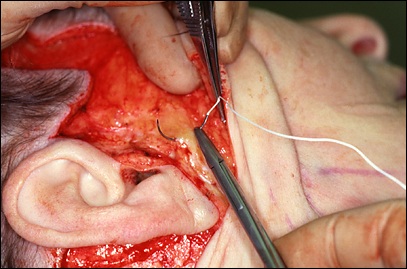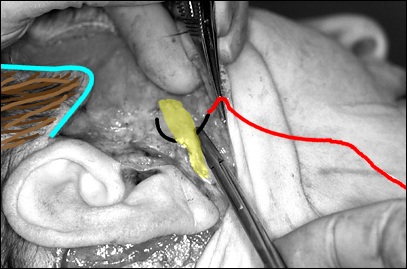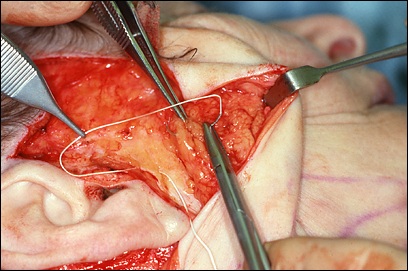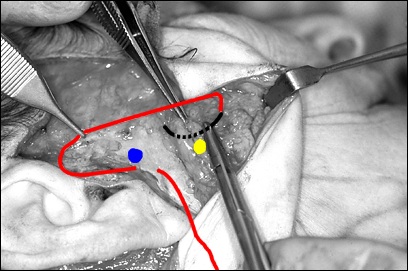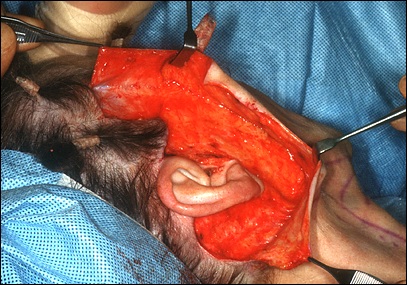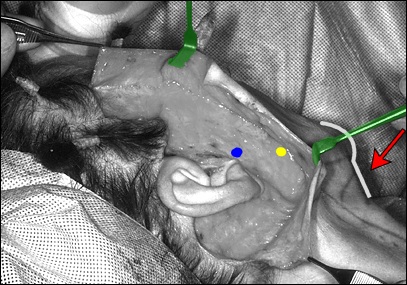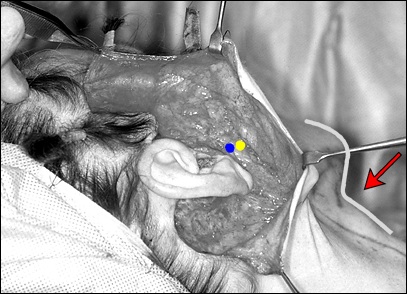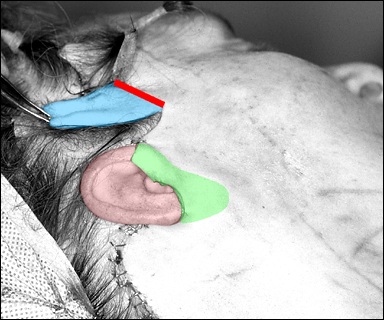 The photographs above
and below this paragraph show the face immediately before (above) and after
(below) placement of
the plication suture. The metal retractors (green) are holding the skin
up so you can see better. The blue dot is where the stitch is passed close to the ear, and the yellow dot is where the
stitch is passed close to the
jowl. Below, you see how the yellow dot approached the blue dot when the stitch was
tied. As that suture is tied, the tissues underneath the skin plicate,
or fold, as we saw in the diagrams on previous pages.
The photographs above
and below this paragraph show the face immediately before (above) and after
(below) placement of
the plication suture. The metal retractors (green) are holding the skin
up so you can see better. The blue dot is where the stitch is passed close to the ear, and the yellow dot is where the
stitch is passed close to the
jowl. Below, you see how the yellow dot approached the blue dot when the stitch was
tied. As that suture is tied, the tissues underneath the skin plicate,
or fold, as we saw in the diagrams on previous pages.
As the stitch was tied,
the skin moved up along the jaw line toward the ear. That movement also
tightened the skin in the front of the neck. I have highlighted, with a gray
line and a red arrow, the contour of the skin underneath the patient's chin.
Immediately after we tie the knot, the movement of the skin has tightened that
area underneath the chin, giving her a more distinct and youthful neckline.
|
